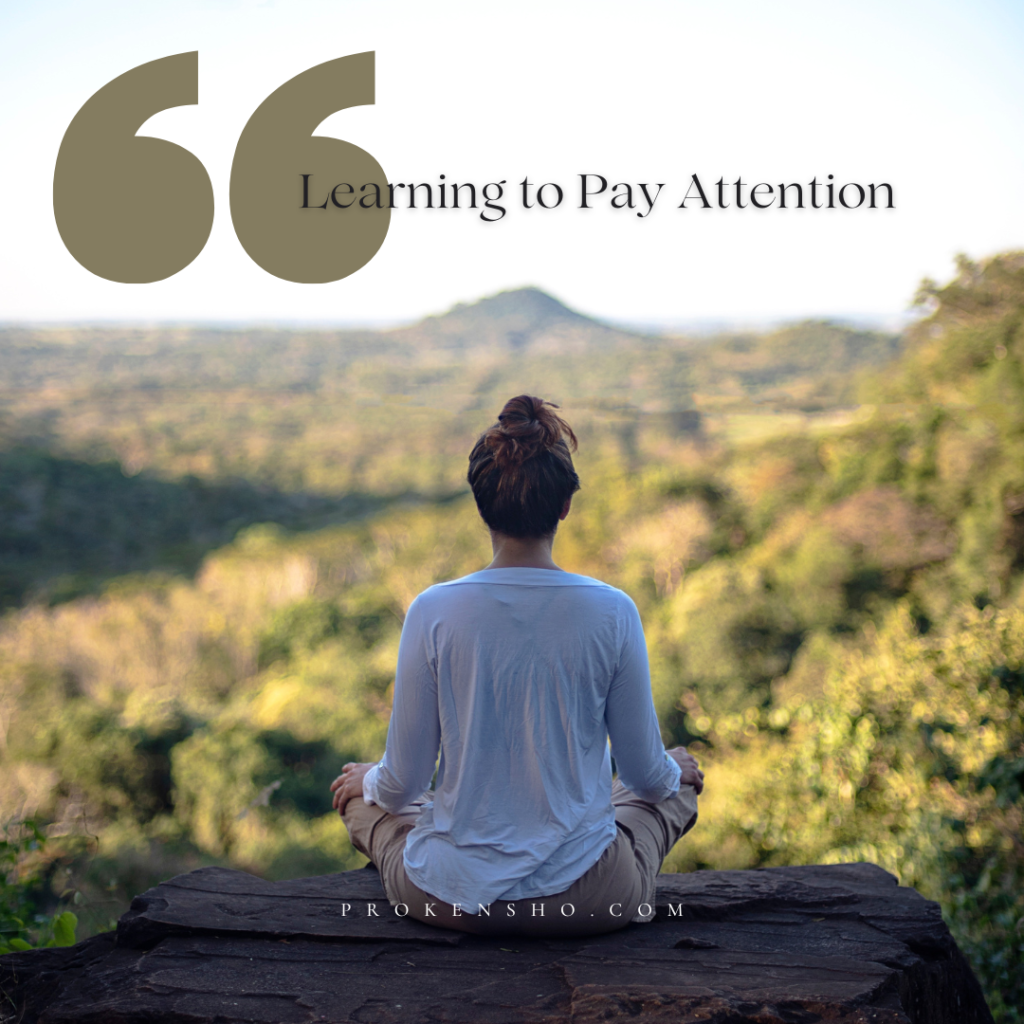Have you ever wondered what it means to pay attention on purpose? In a sense, our attention functions like a laser pointer. It can only focus on one thing at a time. And we all have the capacity to choose where to focus our attention consciously.
Take, for instance, all those times when you were looking at your phone while trying to listen to someone. It might seem like you don’t have to pay much attention to Facebook when you’re scrolling through it. You think you can listen to your roommate or family member across the room at the same time.
Then he or she stops talking, waiting for your response, and you realize that you don’t understand anything. My apologies. What were you talking about?” You put down your phone and pay attention. Later, when you look at your phone again, you realize you didn’t understand what you read.
This is because paying attention to two things at once is impossible. Multitasking is something we all claim to be able to do. It is possible to drive and talk on the phone at the same time. However, what happens when you’re driving in heavy traffic and have to concentrate on something, such as changing lanes? You likely lose track of what your friend is saying on the phone, and you have to ask them to repeat it. It’s because you had to change your focus.
Multitasking makes us less efficient at whatever multiple tasks we’re doing at once. When we do things mindfully, we focus on one thing at a time, consciously deciding to pay attention to that one thing.
Do you want an easy way to practice? Next time your housemate says something to you while you’re scrolling through your phone, put it down and pay attention.
Also, below I have provided an easy-to-follow mindfulness exercise for you to practice that will help you follow up with yourself daily.
“Ten times a day something happens to me like this ~ some strengthening throb of amazement ~ some good, sweet, empathic ping and swell. This is the first, the wildest and the wisest thing I know: that the soul exists and is built entirely out of attentiveness.”
– Mary Oliver
Table of Contents
Learning to Pay Attention
Each week you will be presented with challenges through this platform. You need to complete these challenges to get the most out of your mindfulness journey with ProKensho.
This week we’re focusing on our senses, and what it means to tune in to sights, sounds, smells, tastes and touches as we go about our day.
Related: Exploring The Qualities of Mindfulness
Below are three activities that I hope you’ll try at least once this week:
- Pick an activity that constitutes part of your daily morning routine, such as brushing your teeth, shaving, making the bed, or taking a shower. When you do it, totally focus your attention on all aspects of the activity: the body movements, the taste, the touch, the smell, the sight, the sound and so on.
- Notice what’s happening with an attitude of openness and curiosity. Try and do this with the same activity every day. At the end of the week, write a short reflection on how paying attention in this way shifted your experience of the activity.
- Create your scavenger hunt. At least one day this week, pick something to look out for all day long (e.g. graffiti, broken window). Find it, note it. Look for more.
- Take a “sound” walk. At least one day this week, take a walk, paying close attention to the sounds in your environment. See how many sounds you can distinguish, and keep count of the number of unique noises that you notice.
Here is a helpful form for keeping track of your activities and what you notice along the way:
Weekly Activity Record Form
What am I committing to do?
- Activity One:
- Activity Two:
- Activity Three:
| Day | What I did | Observations |
| Monday | ||
| Tuesday | ||
| Wednesday | ||
| Thursday | ||
| Friday | ||
| Saturday | ||
| Sunday |
Checking in:
What have I learned about myself this week? What would I like to continue doing? What would I like to shift (if anything) based on what I noticed about myself?
Also Read: Introducing Mindfulness to Students

